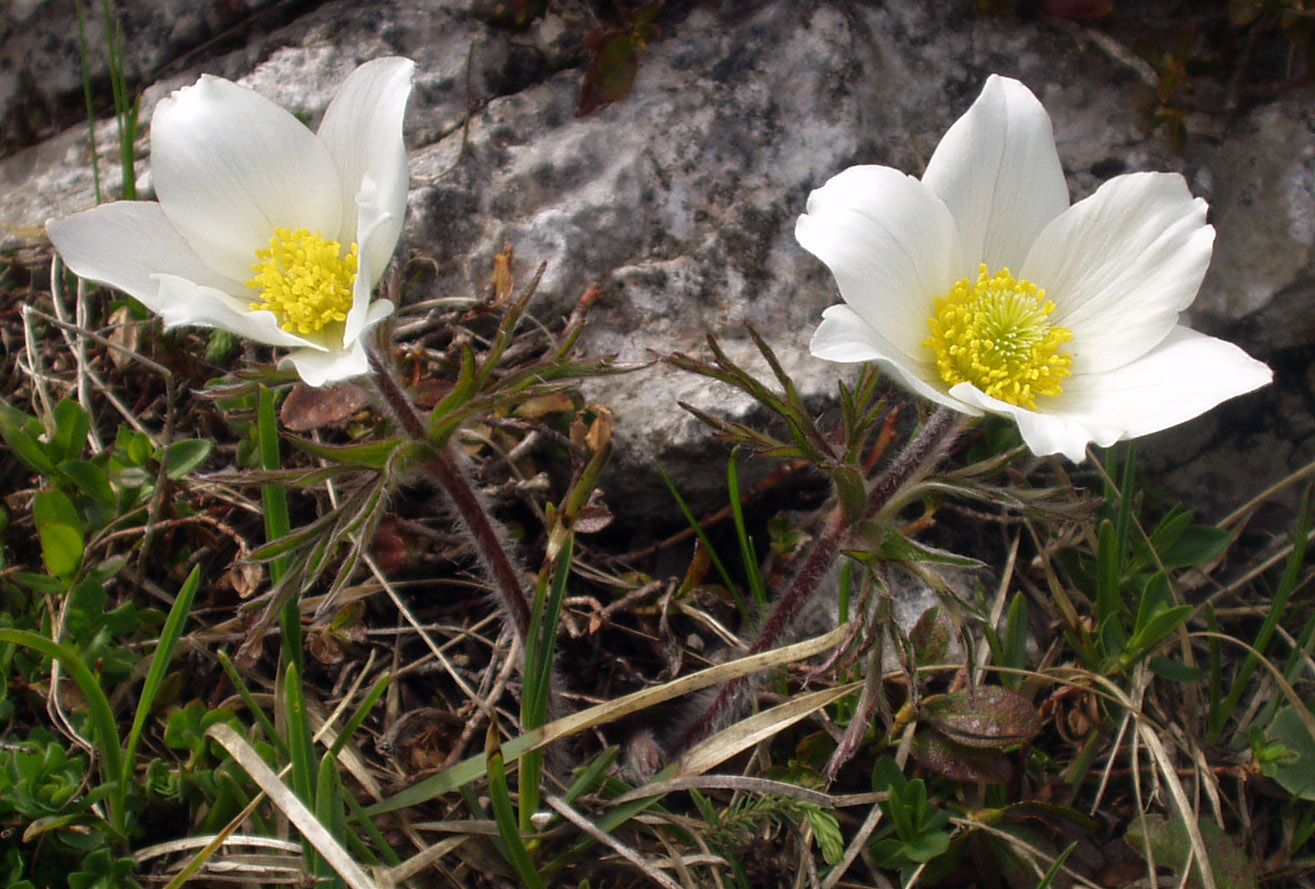- Pulsatilla alpina
Taxobox
name = Alpine pasqueflower

image_width = 300px
image_caption = "Pulsatilla alpina" subsp. "schneebergensis"
regnum =Plant ae
divisio = Magnoliophyta
classis =Magnoliopsida
ordo =Ranunculales
familia =Ranunculaceae
genus = "Pulsatilla"
species = "P. alpina"
binomial = "Pulsatilla alpina"
binomial_authority = (L.)Delarbre
subdivision_ranks =Subspecies
subdivision =
*"P. a." subsp. "alba"
*"P. a." subsp. "alpina"
*"P. a." subsp. "apiifolia"
*"P. a." subsp. "austroalpina"
*"P. a." subsp. "cantabrica"
*"P. a." subsp. "cyrnea"
*"P. a." subsp. "schneebergensis""Pulsatilla alpina", alpine pasqueflower, is an
alpine plant found in themountain range s of central andsouthern Europe from centralSpain toCroatia . It grows between 1200 mabove sea level and 2700 m, and is mildlytoxic ."Pulsatilla alpina" has more upright flowers than other species of "Pulsatilla", which generally have drooping flowers, and they are white or, in the case of subsp. "apiifolia", yellow. The flowers are produced very early, often opening while still under
snow cover.A number of subspecies are recognised, based largely on the form and hairiness of the leaves. "P. alpina" subsp. "schneebergensis" is endemic to the easternmost
Northern Calcareous Alps ofAustria , and is named after the mountain Schneeberg. It is replaced further west by the widespread taxon "P. alpina" subsp. "alpina". "P. alpina" subsp. "austroalpina" is found in theSouthern Calcareous Alps fromSwitzerland eastwards, most commonly overdolomite . "P. alpina" subsp. "apiifolia" and "P. alpina" subsp. "alba" grow oversiliceous rock, but are easily distinguished by the flower colour. Further subspecies have been named for local variants in theCantabrian Mountains (subsp. "cantabrica") andCorsica (subsp. "cyrnea").
Wikimedia Foundation. 2010.
